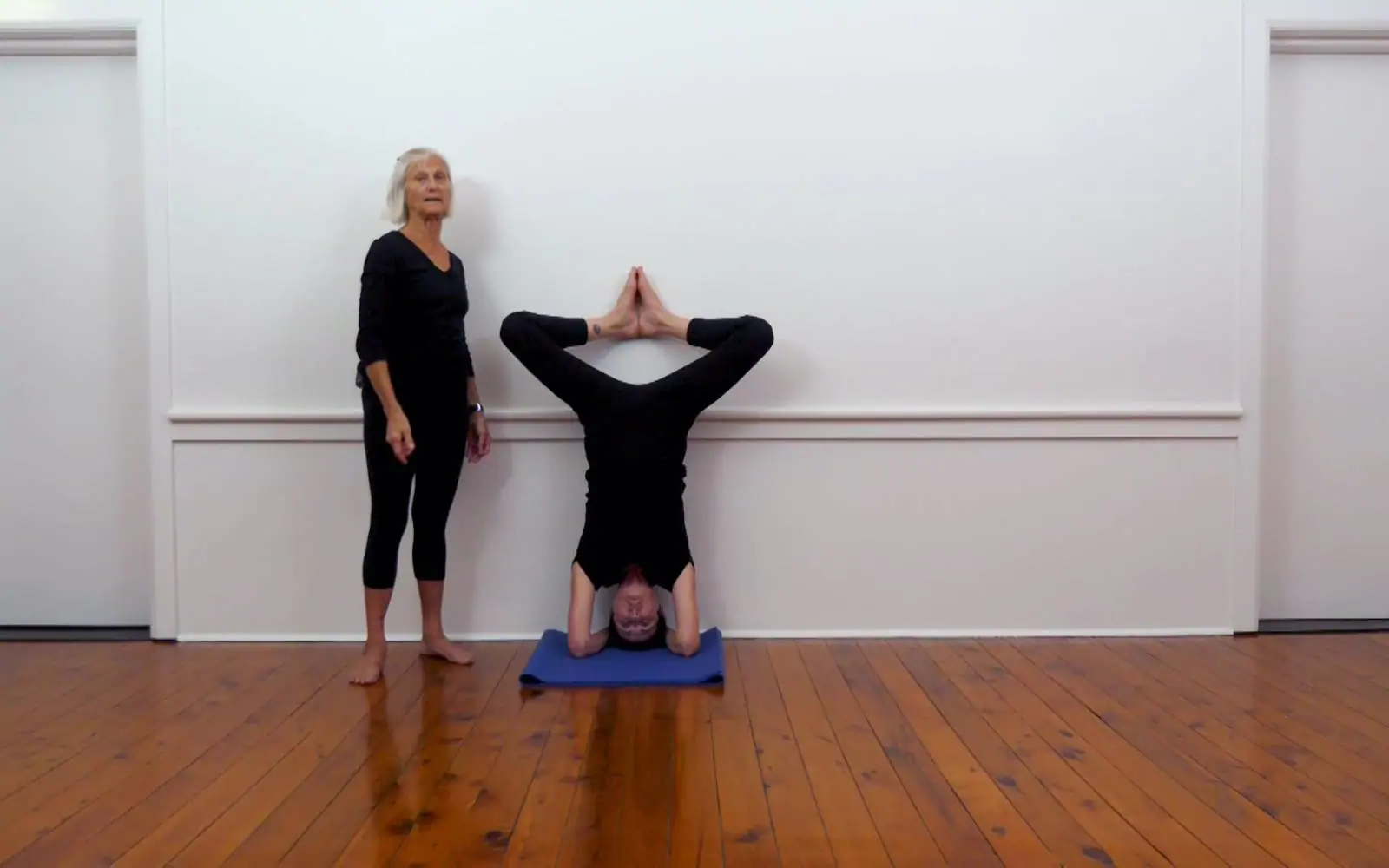How to perform Bound Angle Pose in Headstand
Headstand with legs in Baddha Konasana.
What is Baddha Konasana in Sirsasana?
This pose is a variation of Salamba Sirsasana. As opposed to keeping your legs extended upwards, you position them in Baddha Konasana.
Having your legs in Baddha Konasana an inverted position can help you open your hips more than you would be able to when seated. This is because of the effect of gravity pulling your knees down towards your head. Such a bend in your knees increases the blood flow to your pelvis and lower abdomen, stimulating the organs in that area. This can serve to improve hip mobility and to enhance energy levels.
The heating effects of this pose can be counteracted by the grounding qualities of Virasana or the cooling effects of poses from the Sarvangasana family.
When to use Baddha Konasana in Sirsasana?
Due to its energesing qualities, Urdhva Padma Sirsasana, just like all other Headstand variations, should ideally be included in your morning routine and avoided in the evenings, unless it is counteracted by more relaxing poses.
Once the pose becomes established, it has a mentally clarifying effect. It is said to sharpen concentration and focus. The blood supply to the whole body is affected, by virtue of the inverted nature of the pose. The tissues of the brain, and important glands like the pituitary, are thought to be benefited by this posture due to the extra blood flow, as are the organs in the pelvic and abdominal region.
But, you should keep in mind that the above-listed benefits do not apply to anyone suffering from chronic dizziness or high blood pressure. If these conditions apply to you, avoid any poses from the Sirsasana and Sarvangasana families and replace them with milder inversions. Otherwise, you can work your way up to them through such forward bending poses as Uttanasana and Paschimottasana, or Adho Mukha Svanasana. These poses are useful both for preparing you for the inversion and for counterbalancing its effects when you come out of it. Another good pose to assume when you come out of pronounced inversions is Virasana, as it allows you to return to neutral, reconnect to your breath effortlessly, and get grounded.









